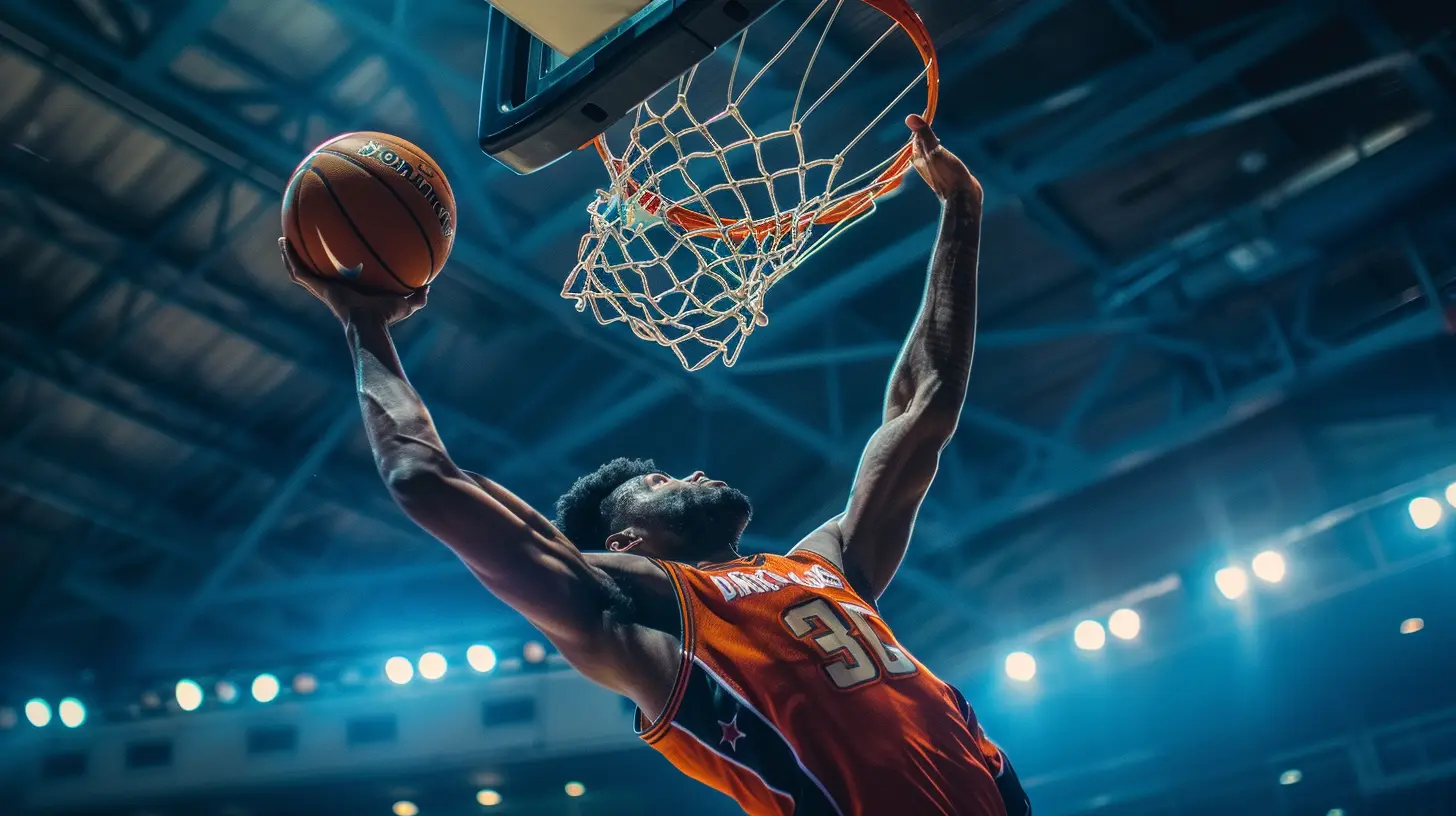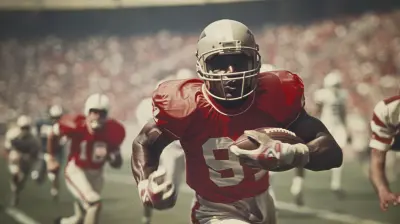The Challenges of Balancing Multiple Sponsorships as a Pro Athlete
16 October 2025
Sponsorships are the bread and butter for many professional athletes, but let’s be honest, they’re not as simple as slapping a logo on a jersey and collecting a check. Balancing multiple sponsorships is like juggling flaming torches—exciting, potentially rewarding, but also incredibly risky if you drop the ball (or, in this case, a torch).
In today’s world, athletes are more than just performers on the field; they are brands. With social media amplifying their reach, they’re walking billboards for companies. However, with this increased visibility and the allure of multiple sponsorship deals comes a myriad of challenges. So, how do athletes stay true to themselves while keeping sponsors happy?
Let’s dive into the complex world of balancing multiple sponsorships as a pro athlete.

The Allure of Sponsorships: More Than Just Money
Sponsorship deals used to be relatively straightforward—athletes wore the brand, appeared in a couple of commercials, and that was that. However, in the age of social media and influencer marketing, the stakes are much higher. Athletes aren’t just selling shoes; they’re selling lifestyles, values, and, most importantly, their personal brand.For most athletes, sponsorships are a significant part of their income. In fact, for some, they earn more from endorsements than from their actual playing contracts. Think about LeBron James or Serena Williams—sponsorships have made them global icons, not just champions in their respective sports.
But it's not just about the money. Sponsorships also open doors and create long-term relationships that can benefit athletes even after they retire. Brands can offer athletes a platform to reach broader audiences, and in return, athletes provide authenticity and credibility to the brand.
However, with great opportunity comes great responsibility—and a few headaches, too.

The Balancing Act: Walking the Tightrope Between Brands
If you’ve ever seen a tightrope walker, you know that maintaining balance requires intense focus. The same goes for athletes managing multiple sponsorships. Sure, the deals look glamorous, but behind the scenes, it's a delicate dance.1. Conflict of Interest: The Brand Tug-of-War
Here’s the thing—every brand wants exclusivity. If you’re an athlete, you might find yourself in a situation where two brands from similar industries want your endorsement. Imagine being sponsored by both Nike and Adidas? That’s a recipe for disaster.Brand conflicts are one of the most common challenges athletes face when juggling multiple sponsorships. Brands pay top dollar to ensure that the athletes they sponsor aren’t promoting their competitors. It’s like dating two people at the same time—they’re bound to find out eventually, and it’s going to get messy.
Athletes need to be incredibly careful when signing deals. It’s not just about saying yes to every offer that comes along. Each contract must be analyzed in detail to ensure there’s no overlap or potential conflict. And let’s be honest, that’s easier said than done.
2. Time Commitment: Stretching Yourself Thin
Ever heard the phrase "burning the candle at both ends"? That’s what it can feel like for athletes who have multiple sponsors. Each sponsorship comes with its obligations—photo shoots, social media posts, public appearances, and commercial shoots. These aren't just 'show up and smile' gigs; they can often require extensive preparation and time commitments.When you're a pro athlete, your primary focus should be on your performance. But when you’re constantly being pulled in different directions by sponsors, it can be hard to keep your eye on the ball—literally.
Let's consider a scenario. You've got a game at 7 PM, but your sponsor wants you at a photoshoot at 2 PM, and another sponsor has you booked for a meet-and-greet the next morning. Fatigue and distraction set in, and before you know it, your game performance takes a hit. Not ideal, right?
3. Brand Alignment: Staying True to Yourself
One of the biggest challenges for athletes is making sure that the brands they align with reflect their own values and image. Let’s face it—fans can smell inauthenticity from a mile away. If your favorite athlete suddenly starts promoting a brand that feels out of character, it’s going to raise some eyebrows.Take, for example, an athlete known for promoting a healthy lifestyle. If they suddenly sign a deal with a fast-food chain, it sends mixed messages. Fans might question their integrity, and the athlete's personal brand might take a hit.
Athletes need to ensure that the brands they partner with are a reflection of who they are. This means turning down lucrative deals if they don’t align with their personal values—no matter how tempting the paycheck might be.
4. Social Media Pressure: The Never-Ending Hustle
In the age of Instagram, Twitter, and TikTok, athletes are expected to be more than just athletes. They’re influencers, and this comes with its own set of challenges. Brands now expect athletes to promote their products on social media regularly. But with multiple sponsors, athletes need to balance their posts carefully to give each brand adequate exposure without overwhelming their followers.Can you imagine the pressure? Imagine waking up and knowing you have to post about a sneaker brand today, a protein shake tomorrow, and a watch the next day. It’s like being stuck in a never-ending commercial break.
Plus, athletes must be cautious not to come off as overly promotional. Fans don’t want to feel like they’re following a walking billboard. Social media is about building a connection with followers, and too many brand deals can dilute that authenticity.

The Importance of a Good Team: Agents, Managers, and Lawyers
To navigate these challenges, athletes need a strong support team around them. Agents and managers play a crucial role in negotiating sponsorship deals and ensuring there are no conflicting interests. They act as the gatekeepers, making sure athletes aren’t overwhelmed by commitments and that any deal they sign aligns with their brand.Additionally, lawyers are essential for going through contracts with a fine-tooth comb. A single clause could make the difference between a straightforward deal and a costly legal battle.
In short, the team behind the athlete is just as important as the athlete themselves when it comes to managing sponsorships.

The Mental Toll: Keeping Your Sanity Intact
Here’s something people often overlook—the mental toll of juggling multiple sponsorships. Athletes are already under immense pressure to perform at the highest level. Adding multiple sponsorship obligations into the mix can lead to stress, burnout, and frustration.Think about it. You’re training for a major competition, and all you want to focus on is winning. But instead of concentrating on your game, you’re worried about whether you’ve fulfilled your sponsorship obligations or if you’re going to upset a brand by not posting enough.
This constant juggling act can take a toll on an athlete’s mental health. And let’s be real—no amount of sponsorship money is worth it if it comes at the expense of your mental well-being.
Strategies for Success: How Athletes Can Manage Multiple Sponsorships
While balancing multiple sponsorships can be a challenge, it’s not impossible. With the right strategies, athletes can make it work. Here are a few tips:1. Prioritize Contracts Carefully
Not every deal is a good deal. Athletes should prioritize long-term partnerships with brands that align with their values. It’s better to have a few high-quality sponsorships than too many that cause conflicts or dilute your personal brand.2. Set Clear Boundaries
Athletes need to set clear boundaries with their sponsors. This means defining expectations from the get-go—how many appearances are required, how often they need to post on social media, and what kind of content they’re comfortable creating.3. Maintain Authenticity
Fans follow athletes because they’re real and relatable. Athletes need to stay true to themselves and only partner with brands that reflect their authentic selves. If a sponsorship feels forced, it probably is.4. Lean on Your Team
No one can do it alone. Athletes should rely on their agents, managers, and legal team to help them navigate the complexities of multiple sponsorships. A good team will help manage obligations and protect the athlete’s best interests.5. Take Time for Mental Health
At the end of the day, an athlete’s mental well-being should be the top priority. Life is about more than just sponsorships and money. Athletes should take time to disconnect, recharge, and focus on their personal happiness.
Conclusion: The High-Stakes Juggle
Balancing multiple sponsorships as a pro athlete is no easy feat. It’s a high-stakes juggling act that requires careful planning, a strong support system, and a deep understanding of your own brand. While the rewards can be tremendous, the risks are equally significant. Athletes need to be strategic, authentic, and mindful of their mental health to ensure they don’t drop the ball—or the flaming torch.In the end, it all comes down to balance—just like in sports. You’ve got to keep your eye on the prize while staying true to yourself.
all images in this post were generated using AI tools
Category:
Sponsorship DealsAuthor:

Uziel Franco
Discussion
rate this article
1 comments
Ace Reilly
Fascinating insights! How do athletes manage this balance?
October 20, 2025 at 12:24 PM

Uziel Franco
Thank you! Athletes often rely on strong time management skills, clear communication with sponsors, and a supportive team to effectively balance multiple sponsorships while maintaining their focus on performance.


